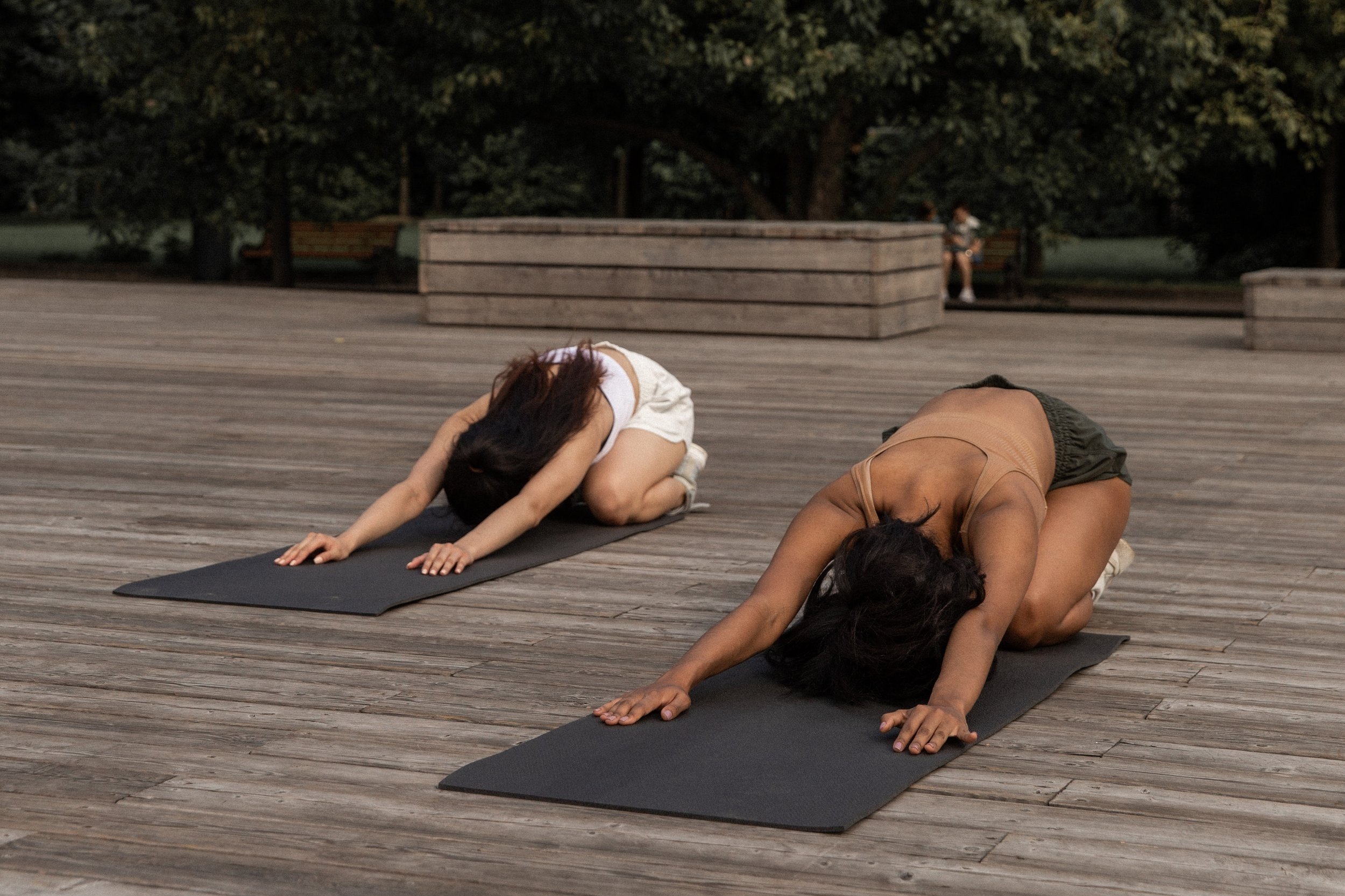Let’s explore the importance of surrender. How does surrendering in yoga translate into our lives off the mat?
In a way, surrender seems the opposite of setting an intention, but it’s not really like that in yoga. The two concepts complement each other and are equally important. The process of building a yoga practice is led by surrender to our own body’s capacity rather than our intellectual or cognitive determination alone. It is an exercise in trusting the goodness, the strength, and the honesty of the body. And it is by intention, about trusting the body’s capacity to tell us what it needs, that we are actually able to advance in our practice.
Surrender can be perceived as a type of weakness. It brings up thoughts of powerlessness and losing control. In our everyday life, it can be hard to let go and accept what lies ahead of us without complaining. Yet, by learning to surrender, we can achieve true peace and freedom. The idea of surrender is a tricky one to master for the human brain as it goes beyond logical reasoning. At a certain point we need to stop asking, as there are no more answers or logical explanations. We could choose to either tirelessly work the rest of our lives to try to find some answers, or gracefully surrender to the mystery of a higher design. One path can lead to frustration, confusion and anger, while the other path perhaps offers ease, peace and support, if we let these in. It is when we surrender to something greater than ourselves and open up to the flow of the universe that we express our readiness to receive. Seen in perspective, what looks like inaction is simply the recognition that now is not the time to act. For this reason, masters of surrender tend to be masters of flow, people who know intuitively how to move with the energies at play in each situation.
Surrender requires practice. The great paradox about it is that though we can practice surrender, invoke it, or open up to it, we can’t actually make it happen. In other words, just as the practice of ‘being loving’ is different from ‘being in love’, so the practice of surrendering is different from the state of being surrendered. As a practice, surrender is a way of deeply relaxing your psychic and physical muscles. It is an antidote to the frustration that we experience when we try to control the uncontrollable. However, the state of surrender is always a spontaneous arising, which we can allow by being open to it, but never force.
The main benefits of surrender are serenity and a sense of freedom from our self-imposed burdens. With surrender comes the understanding that everything works out in its own time. If accepting and respecting the limits of our bodies is how we practice surrender on the mat, doing our best and then letting go of the result, or gently refusing to live up to some image we have of ourselves are great ways to master surrender off the mat and in our everyday life. The ultimate goal should be the wonderful relief from the feeling that we have to struggle to get through life and a deep sense of being guided and cared for by something greater.
Original Article - Marcia Sharp.



